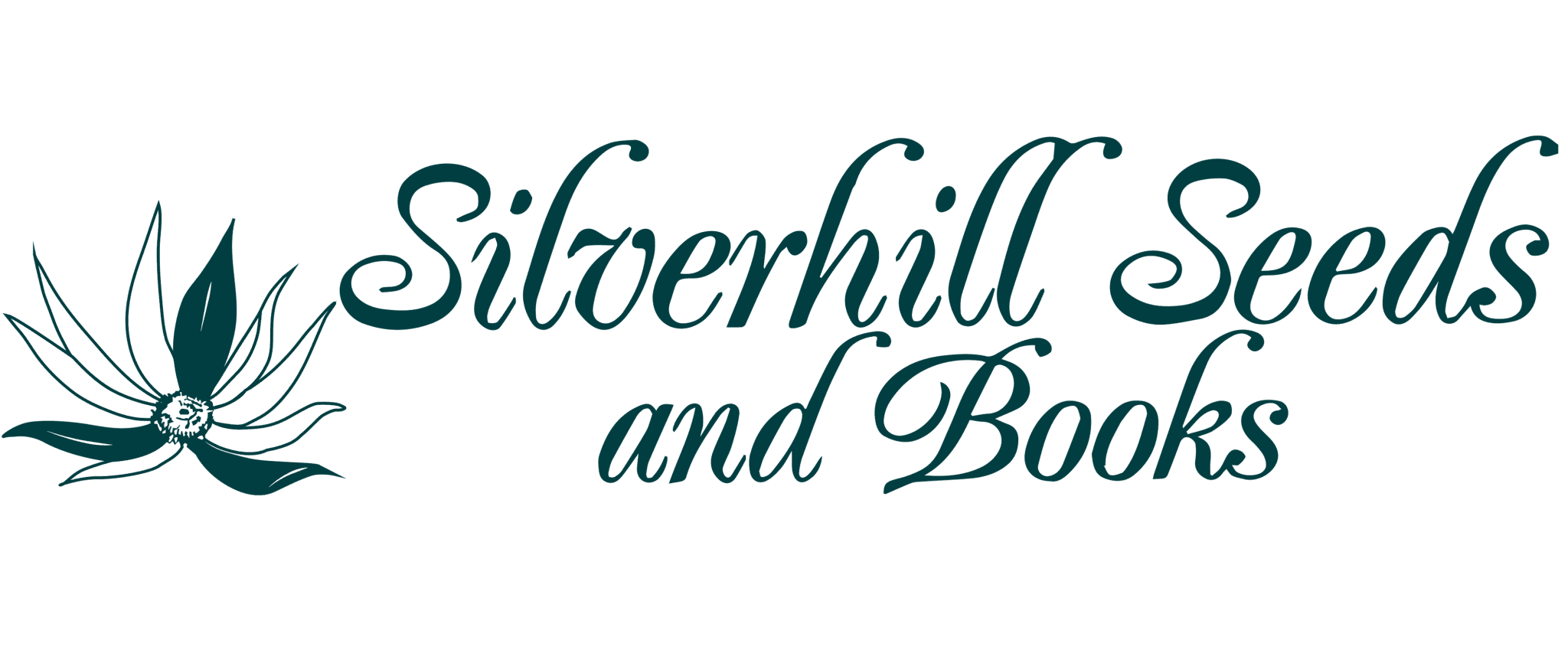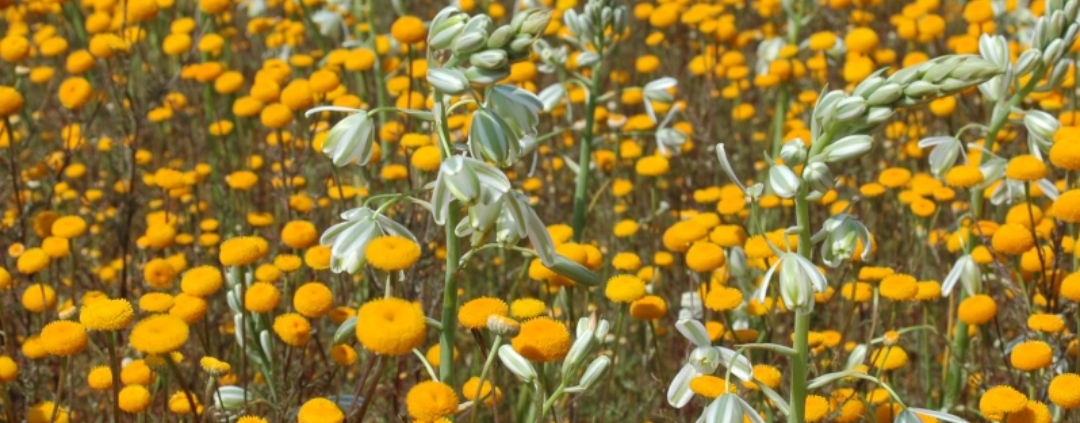From the Archives: Newsletter January 2002
January 2002
Dear Plant lovers
As I read last year’s newsletter (January 2001), we were facing an uncertain winter which we hoped would not be the same as the previous disastrously dry season. By May we had still not had a drop of rain, the vegetation was bone dry and we feared the worst. Then the rains began, with heavy regular falls in the Western Cape and into Namaqualand, and this continued until September and October. In the past the Cape has earned its name “The Cape of Storms”, and this year we had some good examples. One particular storm delivered over 150mm of rain in 24 hours. Another cold front a week later brought 17m waves crashing against the Cape Peninsula and this played havoc with the shipping – one ship aground and two wrecks in 12 hours! On the same day we were without power for long periods due to the wind blowing the power lines together.
The rain and cold fronts did however do several things – all our dams are still 98% full, the wheat farmers had a bumper crop, and we have had one of the most impressive flower displays in years. The bulb display at Nieuwoudtville was possibly the best that we have ever seen, and because of extended cold conditions in July and early August, all the early flowering bulbs were delayed and flowered much later, together with the later species. This resulted in stupendous displays all the way from Cape Town right up into Namaqualand and Springbok. Those of you who visited the Cape this spring will agree, and if it was your first visit, it will be a while before you see its equal. The picture of Romulea sabulosa on the cover was taken at Nieuwoudtville this season.
Our trip to Zambia was successful, but we did not get as far as we would have liked. We found it very expensive (with fuel at over US$1 per liter) and it is a cash only society so we were unable to use our credit cards. We simply ran out of money and we realised that if we went further north, we probably wouldn’t have enough money for fuel to get home again! We had also not realised how vast the country is and the distances between centres is huge. We started in the west and drove north along the Zambezi River, then east to Lusaka along some of the worst roads imaginable. We then intended driving north to the Tanzanian border, but only got about half way before turning south again. The trees were magnificent and we saw many interesting orchids, shrubs and perennials. As we were there in the dry season, all the bulbous plants were dormant.
We then drove back south through Zimbabwe and spent a profitable two weeks there. All the Aloes were in full flower, and the veld was beautiful. We took the opportunity of visiting the Chimanimani Mountains in the east of the country for a few days, and despite it being the height of the dry season, we experienced heavy rain while walking in the mountains. This brought all the rivers down in flood and prevented us from getting back to our vehicle at the bottom of the mountain and on the other side of the river! After some really hair raising river crossings and getting soaked and extremely cold, we finally found refuge in a cave where we waited for two days for the weather to clear (meanwhile running out of food!). We returned to the area some two months later and we couldn’t believe it was the same place – it was blazing hot and bone dry!
September the 11th and all that that disastrous day brought, has had all sorts of effects on us all. Air transport is still disrupted and we now have to book freight well in advance. The proposed irradiation of mail in the USA is still an unknown factor, and we will have to see whether we can still send seed by post. We have to be very careful when treating seeds with insecticide as most insecticides consist of white powder, which is treated with great suspicion all over the world.
The tissue culture laboratory is in full production and is a wonderful environment for the people working there. Andy (our partner) is already talking about expansion! See the lab on the catalogue cover, with our annual trial beds in the foreground.
Although we had no intention of going overseas this year, Andy convinced us that we should visit the Horticultural Trade Fair in Amsterdam in November, to see what international horticulture and floriculture is doing. So we braved flying, had a wonderful time and we all came home fired with enthusiasm. We made many new contacts, renewed acquaintances with old customers and found that the Horticultural Fair was a good place to talk business in a relaxed way.
On returning to Cape Town, we decided to buy a book business, and you will find our larger book list included in this catalogue. We bought Honingklip Books, run by Walter and his late wife Ruth Middelmann for many years. Walter and Ruth were the original owners of our seed company, so in a way, the books have come home again! Walter is now over 90 and he found that the books were becoming too much for him to cope with on his own, so he asked us if we could cope with them as well as the seeds. We both love books, and Frances is a trained librarian, so we were happy to take the business over. Our list contains mainly current books that are still in print, but whenever possible, we do sell old books long out of print. Please ask us about any book that you are looking for and we will see if we can find it for you.
American customers: According to new legislation in the USA, from the 22nd January, all seed being imported into the USA has to be accompanied by a phytosanitary certificate. Many orders are small, and it simply wouldn’t be worth it to get a phyto for $12 for an order worth less than that amount. We have to drive into the centre of Cape Town to get the certificates, and the thought of carrying 20 parcels into the city once or twice a week fills us all with horror. So we have decided to try the following system with the help of Rachel’s brother and sister-in-law who live in Chicago. We will complete all orders for the USA as we receive them, and each week we will send all the orders in one large box accompanied by one phyto to Rachel’s brother. Either he or his wife will then re-pack the seeds and send them out to each customer. This week we sent one consignment in this way, and if it works, we will continue in 2002. This means that each customer will only have to pay a small portion of the fee for the phyto (probably about $1 or $2 per person) instead of $12. If this system does not work, we will have to think again.
Our staff situation remains more or less the same. Ondine is on four months maternity leave and will be back in February just in time to help with the rush of orders. She had a baby girl in October and appropriately named her Erica. Rachel’s mother is still going strong and mutters about customers who don’t order their seeds alphabetically and according to the categories in the catalogue! Frances’s teenagers are still, unfortunately, teenagers, and Darkie’s grandchild is now 8. We have several part time helpers who are becoming more full time as we get busier each year. At present they are Cherry, Antonia and Andrea.
We hope that you like our new catalogue cover in colour. The only picture we have not mentioned is one taken by Rachel’s nephew (another teenager!) (from Holland) who spent about 6 months with us last year. He sneaked a picture of two daft seed collectors that he came across in the middle of nowhere!
We wish you well for 2002 and let us hope that it is more peaceful and less stressful than the last year has been.
Best wishes
Rod and Rachel Saunders



